
Review on 💻 SGPC K70 ITX Computer Case: A4 Small PC Case with Aluminum Construction and Tempered Glass Side Panel (Black) by Robert Ogrodnik

Pretty solid case in A4 form factor, know you're paying $100 for a $30 case
TL;DR: This is a great A4 ITX case if you're looking for a cheaper option to Zoom out looking, but be aware that you're buying a $30 case for $100. This is a niche product for a small market, so the bulk of the cost comes from the premium cost of the low volume product and paying shipping/import taxes to get the case from China. The name of the cover is a bit confusing. In the SGPC lists, K77 and K70 are completely different cases. As far as I can tell this is a K70 case based on pictures from TaoBao and Superbuy (don't use CaseEnd as a reference as it looks outdated in terms of photos). The power switch is on the front panel, the C14 socket for the power cord is in the lower right corner of the case near the front. In terms of build quality, the case is definitely worth $30. The fit and finish isn't great, but it looks good from a medium distance. The paint doesn't look spectacular in bright light, the finish underneath isn't very good, especially near the vent cutouts and edges. Panels are not completely flush. The power button has a cheap feel, pressing the power button pushes the entire button back including the plastic LED ring that exposes the inside of the case (I was expecting something like an elevator button where you press the center of the button, but the LED ring stays in place). The drive activity indicator is a red LED on the ring itself, but is mostly invisible due to the brightness of the white LED. My biggest issue with the case is the included power cord (and why I removed the star). A power cord is included, but it is a Type I plug for China. While an adapter is included, it's far from ideal (the plug-I form factor is very bulky) and most people probably won't want their expensive computer to be powered by a travel adapter. I ended up spending another $40 trying to find a solution until I agreed to a compromise I was willing to accept. The first thing to note is that you need to find a flat power cord that CONNECTS AT THE LEFT ANGLE, as a left angled cord will route the wire to the back of the case. In hindsight, you could probably unscrew the C14 connector on the bottom of the case to flip it. In short, my solution is a model 120-C13RAS-60/075 extension cord (found on Aliexpress for $8.12 for the left version). Unfortunately, this requires a connection to a regular power cord, but then again, the spacing of the extension cord's C13 plug is basically the exact height limit for the power cord. The power cord must be less than 35mm long; This is very difficult to achieve with Revain (I bought two different cables advertised as low profile and both were over 40mm apart). I've tried alternatives like transparent rubber feet to lift the case (the feet are about 20mm in diameter), but that only made the case cheaper. Please note that I am not suggesting the hardware I used for my build. I definitely bit off more than I could chew, but hey, this looks good. The biggest problem with such a small case is (obviously) lack of space. The cables are all too long and my hands were chafed from hitting everything trying to put it all together. I highly recommend taking your time with the build and researching the hardware you are buying to make sure it will fit before committing. I've been planning an A4 ITX build since I first saw the Dan A4 ITX case many years ago, but could never justify dropping $200-$300 per case. Now that the K70 is here I decided to give it a try. I downsized with the Fractal Nano Define S (26.8L to this 9.54L K70); It was a graft build, so essentially I was trying to install hardware from a large body build. Dark Rock TF - MSI B450i ITX Gaming PLUS AC AM4 Motherboard - G.SKILL RipJaws (2x16) 32GB DDR4 @ 3200 - EVGA RTX 2070 Black - 2 x Samsung 860 Evo (1TB, 500GB) - 1 x ADATA SU800 (1 TB) - Samsung 960 NVME 500GB - EVGA SuperNova 650GM (650W/80 Plus Gold) - airgoo NEON RGB LED strip (looks cool but I don't recommend it) - 2x Noctua NF-R8 80mm (doesn't fit) - CableMod CM-EV2 - SKIT-KKV-R; (Note that the stock 650GM cables are shorter! They're purely aesthetic, but they bend a bit more easily) I was planning on putting the 5900X in there, but I couldn't wait. Given the 5800X's temperature, I'm glad I didn't (it regularly hits a lofty 88C on Cinebench). Size considerations: Initially, I was able to fit 4 SSDs: you can stack up to three SSDs on a side. PSU (that's what I currently have). I was able to fit a 4th by squeezing it between the PSU and the front of the case, but it was unsightly from a cable management perspective and I felt uncomfortable with the SSD being compressed for long periods of time, so I opted for 3 SSDs. .The two biggest limitations are GPU length (270mm) and CPU cooler height limit (135mm). I left calmly! Dark Rock TF and an existing 2070 from a previous build (fortunately pre-pandemic). My EVGA 2070 has 267mm of ground clearance, so that's not a problem. Although the case can fit, it's quiet! Dark Rock TF, I don't recommend it; This was the biggest problem for the build. The cooler itself requires a screw to be attached/fastened to the bottom of the motherboard which means you pretty much need to have everything plugged in and installed on the motherboard before dropping it into the case (fan connectors attached/power connectors installed , RAM is everything). ), especially since the cooler practically covers the entire mainboard. If I need to adjust the cooler, I have to remove the entire motherboard (and mostly cables) since the case doesn't have a removable rear side panel to access the motherboard from the back. Not only that, given my RAM clearance height (about 1.5 inches with G.SKILL RipJaws) only one alignment for Dark Rock TF can be installed on my motherboard. This inadvertently resulted in no release for the installation of the Noctua NF-R8. I got around this by installing fans on the outside of the case, which is far from ideal. Due to the size of the Dark Rock TF, I couldn't install the top left motherboard screw. The Dark Rock TF fan is about half a centimeter away from the glass pane. Airflow: The ventilation is decent: Holes for two 80mm fans on the back with a neat square hole (40mm x 45mm) between the PCI-E slots. Mounting bracket and glass pane, vented top of housing (cutouts with black perforated grille), cutouts at bottom, cutouts at bottom right side of housing. In fact, the entire body is ventilated from all sides except the front. Dimensions (approximately based on visual observation and tape measure): L x W x H: 277mm x 158mm x 218mm (without feet) 277mm x 158mm x 232mm (with feet) Based on dimensions this is a 9, 54L Included accessories: - 3-port USB 2.0 hub (I recommend Anker 4-port USB 3.0 Unibody Aluminum White for color consistency) - low-profile power cable, but with Type I connector (used in China)); A standard C14 cable connector has a pitch of approximately 1 (1/8) inch or 29 mm. - Power adapter: Type I - Type A (USA). - A pair of zippers. - Magnetic strips (I assume these are the PSUs) - Motherboard standoffs (I didn't use them, there doesn't seem to be enough room for them) - Various screws Other thoughts: - Note that the aluminum case itself is not magnetic, therefore you can only use the magnetic strips on the metal sides of your power supply. - The side window is real glass, not acrylic, which is nice - I found the aluminum top and bottom sides visible behind the glass side panel looked a bit distracting. I adjusted the look by covering it with black washi tape. Looks a little cleaner IMO. Due to the location of the connector, quite a bit of space is wasted between the GPU and the right side of the case as shown in one of my images. Overall, despite the case's flaws/oddities, I really like it considering how much cheaper it is than alternatives. Visually, I would have preferred perforated round holes to long rectangular cutouts on the case (I guess to reduce production costs).
- Long time
New products
Comments (0)
Top products in 🎒 Computer Cases
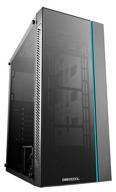
Computer case Deepcool Matrexx 55 black

55 Review

Computer case be quiet! Pure Base 500 black

32 Review
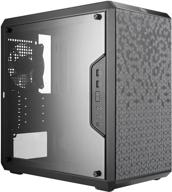
MasterBox Q300L Micro-ATX Tower with Magnetic Dust Filter, Acrylic Side Panel, Adjustable I/O & Ventilated Airflow, in Black

40 Review
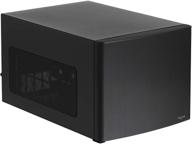
Fractal Design Node 304 - Black - Mini Cube Compact Computer Case - Small Form Factor - Mini ITX – mITX - Enhanced Airflow - Modular Interior - Includes 3x Fractal Design Silent R2 120mm Fans - USB 3.0

42 Review
Another interesting products
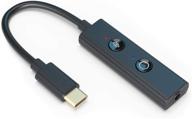
Enhanced Sound Blaster Play! 4 Hi-res USB-C DAC and Sound Adapter with VoiceDetect Auto Mic Mute/Unmute, Dual Noise Cancellation, Bass Boost, Dynamic EQs | Ideal for Windows PC Video Calls

13 Review
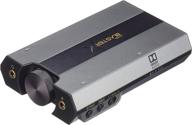
🎶 External USB Sound Card - CREATIVE Sound BlasterX G6

85 Review
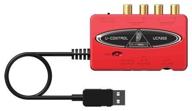
External sound card BEHRINGER U-CONTROL UCA222

16 Review
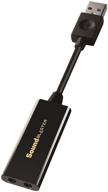
Creative Labs Sound Blaster Play! 3 External USB Sound Adapter - Compatible with Windows and Mac - Plug and Play (No Drivers Needed) - Enhanced 24-Bit 96Khz Playback Upgrade

53 Review

